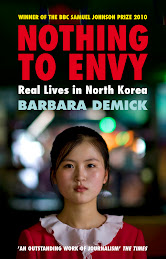
| By Amresh Gunasingham SINGAPORE is encouraging farmers in Jambi, Sumatra to turn to aqua-culture, so as to steer them clear of slash-and-burn activities that cause haze. The project will involve training farmers to grow their technical expertise and skills. It is hoped that a thriving fish export industry can be developed to provide the province's 2.7 million population with an alternative means of subsistence, said Mr Joseph Hui, head of the National Environment Agency's (NEA) environmental protection division. 'The hope is that by convincing farmers and commercial operators to go into fishery, they are less likely to burn forests.' It is one of two new action programmes identified under Singapore's two-year-old collaboration with the province, focusing on the Muaro Jambi Regency, an identified fire-prone zone in Sumatra. At 524,600 hectares, it is about eight times the land area of Singapore. The $1 million Jambi plan dovetails with Indonesia's own national action plan to tackle land and forest fires, under which it aims to achieve a 75 per cent reduction in hot spots by 2012. The second programme involves the development of more advanced training to help farmers manage peatland areas, which are fertile ground for growing crops. The project aims to train the villagers how to maintain a peatland. Hydrologists from the National University of Singapore (NUS) will be roped in to map the training programmes as well as work out the best way to construct dams to keep the water level in the peatland areas high. During an El Nino year, such as this, when dry periods are prolonged, water levels go down in peatlands, making them very susceptible to fires, said Mr Foong Chee Leong, head of NEA's meteorological services division. 'Any small fire will spread to the peatland. Once the fire starts, there will not be enough water available to fight the fires except having to wait till the arrival of the monsoon rain.' An additional $800,000 will be invested by Singapore in the new projects. Jambi Governor Zulkifli Nurdin, revealing that peatlands make up to 40 per cent of the forested area in Jambi province, said fires there were especially difficult to contain. 'If peatlands burn, they are difficult to stop as many areas can be up to 8m deep. Once the fires start, we can do nothing about it.' But forest fires in Jambi are less and less of an occurrence over the last two years, the governor said, without revealing any figures. 'We know that in Riau, for example, there are serious fires currently, but in Jambi, we can see clean air.' Yesterday, 57 hot spots were detected in Sumatra, according to the NEA. Of these, there were just four hot spots in the Jambi province. The governor added that the provincial government had initiated many programmes aimed at improving the economic well-being of its people. One started five years ago, for example, has seen 600,000 hectares of land now used to cultivate rubber trees and palm oil plantations. 1. How did Singapore assist Indonesian farmers in controlling the haze problem? 2. What form of help did Singapore give to the farmers to improve their farming methods? |

























